Ways of Looking: How to Experience Contemporary Art, by Ossian Ward, Head of Content at the Lisson Gallery and former chief art critic at Time Out London.
Available on Amazon USA and UK.
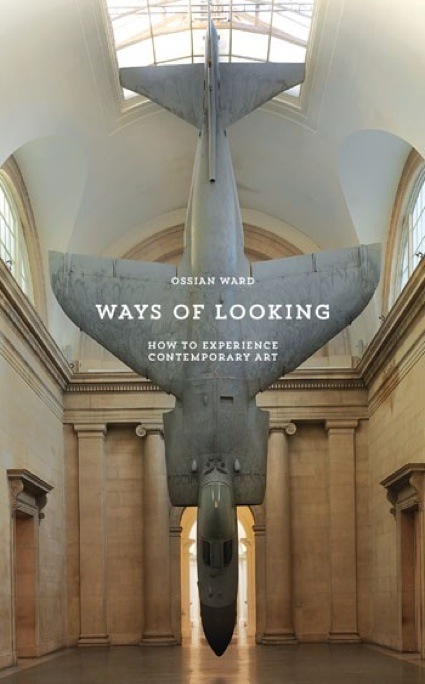
Publisher Laurence King writes: Art has changed. Familiar styles and movements that characterized art production prior to the twenty-first century have all vanished. Traditional artistic media no longer do what we expect of them.
This book provides a straightforward guide to understanding contemporary art based on the concept of the tabula rasa – a clean slate and a fresh mind. Ossian Ward presents a six-step program that gives readers new ways of looking at some of the most challenging art being produced today. Since artists increasingly work across traditional media and genres, Ward has developed an alternative classification system for contemporary practice such as ‘Art as Entertainment’, ‘Art as Confrontation’, ‘Art as Joke’ — categories that help to make sense of otherwise obscure-seeming works. There are also 20 ‘Spotlight’ features which guide readers through encounters with key works..
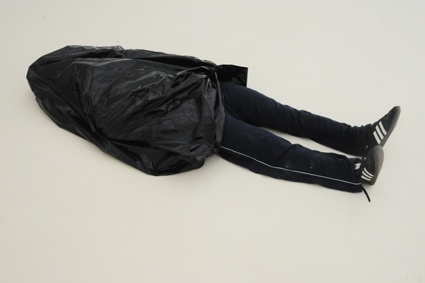 Gregor Schneider, Man, 2004
Gregor Schneider, Man, 2004
Contemporary art is not what it used to be. The old rules, classifications and movements don’t apply anymore. Art can be anything, anywhere, it can even be anyone. You might pass by it on the street and never realize it. The author thus set up to guide us through art appreciation and consumption. Thankfully, Ward is a witty, straightforward and seasoned art critic who realizes that no one needs an encyclopedic knowledge of art history nor a master in art speak to enjoy art. In fact, Ward advises that you come with a fresh mind and a clean slate, calling for a tabula rasa approach where T.A.B.U.L.A. stands for:
Time: just hold on, don’t turn your back yet. Stay there for a few minutes before deciding the work is not for you (that’s one rule i should follow more often.)
Association: find an entry point, look for the tone, story, theme or image that strikes a chord with you.
Background: the title, personal history of the artist or short description of a piece should enable you to understand and appreciate it better.
Understand: by this stage you might have a better understanding of the work and if not…
Look again: everyone deserves a second chance.
Assessment: this is where you’re allowed to be subjective and form your own opinion about a work.
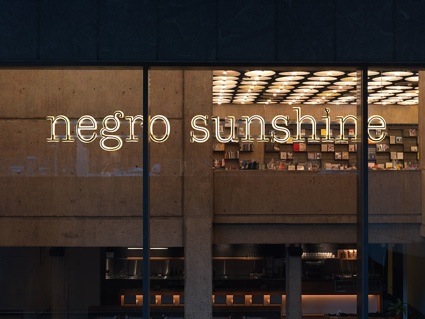 Glenn Ligon, Warm Broad Glow II, 2011 (photo)
Glenn Ligon, Warm Broad Glow II, 2011 (photo)
Ward then suggests that we look at today’s art through various lenses: entertainment, confrontation, event, message, joke, spectacle and meditation.
The theory is never overwhelming nor dogmatic. The author illustrates each point with a number of artworks which he dissects according to the T.A.B.U.L.A. perspective.
I loved this book. I’m tempted to offer a copy to my many friends who stare at me with a look of “poor loser, that art job must be so BO-RING” in their eyes. I never managed to explain them why what i do for a living makes me want to spring out of bed every morning but this book might be more convincing. But Ways of Looking will be of great help to me as well. I’ve always thought that i was good at feeling when a work is ‘good’ or ‘bad’ but i often struggle to form intelligible thoughts that would help me express what i find so interesting about a particular piece or exhibition.
I particularly liked the tone of the book. While the author sounds genuinely passionate about contemporary art, he doesn’t seem to take it too seriously either. From what i could infer, he doesn’t suffer sloppy, easy and pompous art. There certainly isn’t any of that kind of art in his book.
Some of the works presented and analysed in the book:
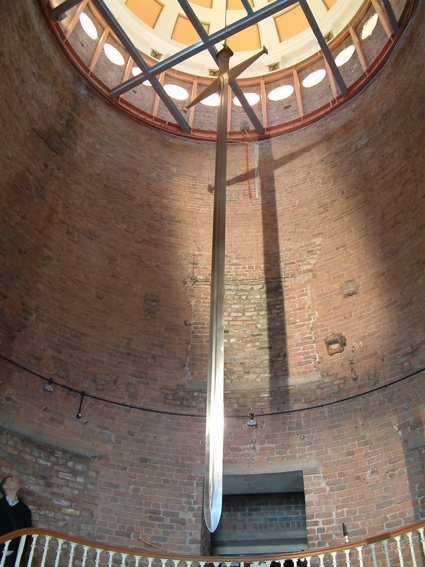 Kris Martin, Mandi XV, 2007
Kris Martin, Mandi XV, 2007
This 7-metre-long version of a medieval bronze and steel cruciform sword is suspended in mid-air over the heads of visitors. Like the Sword of Damocles, this memento mori reminds us of the precariousness of all things.
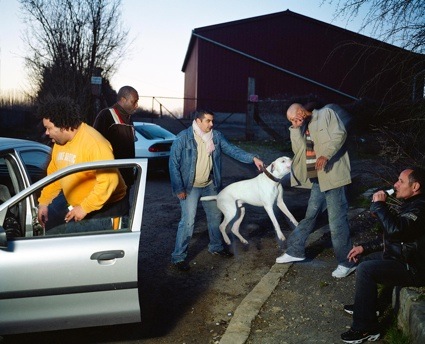 Mohamed Bourouissa, La Morsure, 2007. From the series Périphéries
Mohamed Bourouissa, La Morsure, 2007. From the series Périphéries
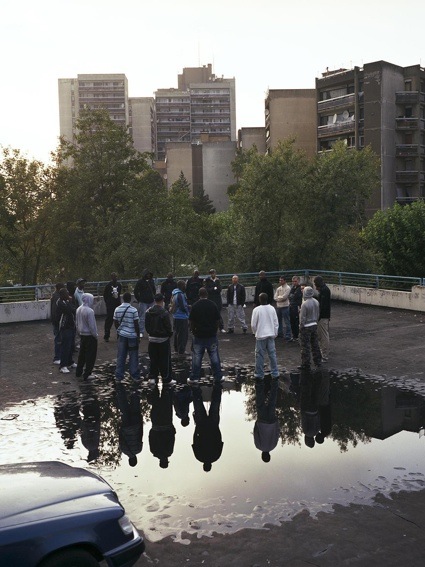 Mohamed Bourouissa, Le miroir, 2006. From the series Périphéries
Mohamed Bourouissa, Le miroir, 2006. From the series Périphéries
Mohamed Bourouissa‘s photos look like evidences from a photo reportage about delinquency in French suburbs inhabited by Arab and African communities. Taken between 2005 and 2008, the photos directly echo the 2005 unrest in the Paris suburb of Clichy-sous-Bois.
Each image has actually been carefully staged and choreographed to simulate the documentation of tensions and confrontations about to explode. Yet, the composition is so precise and elegant that the photos also evoke Romantic paintings.The series was named after the Boulevard Périphérique, the ring-road surrounding Paris that effectively ostracizes communities that live beyond this physical and metaphorical barrier.
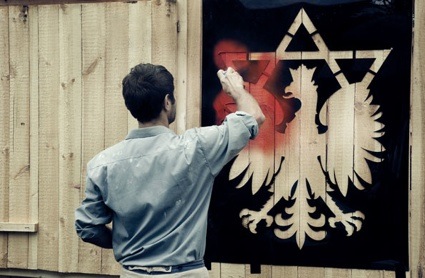 Yael Bartana, …And Europe Will Be Stunned
Yael Bartana, …And Europe Will Be Stunned
The trilogy And Europe Will Be Stunned follows the activities of the Jewish Renaissance Movement in Poland (JRMiP), a utopian political group that calls for the return of 3,300,000 Jews to Poland.
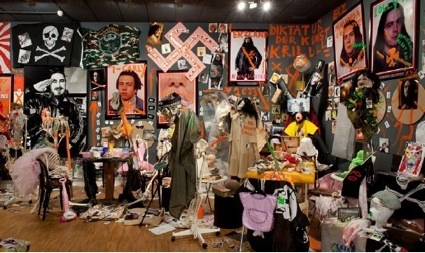 Jonathan Meese, The Dictatorship of Art, 2011. Photo by Jan Bauer
Jonathan Meese, The Dictatorship of Art, 2011. Photo by Jan Bauer
 Allora & Calzadilla, Track and Field, 2011. Installation view with runner Gary Morgan at the U.S. Pavilion, 54th International Art Exhibition, Venice
Allora & Calzadilla, Track and Field, 2011. Installation view with runner Gary Morgan at the U.S. Pavilion, 54th International Art Exhibition, Venice
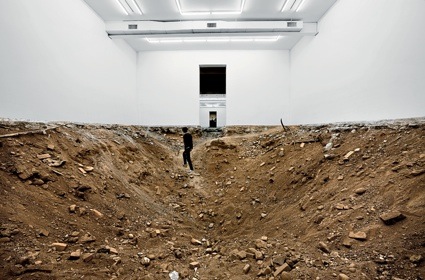 Urs Fisher, You, 2007. Excavation of gallery space
Urs Fisher, You, 2007. Excavation of gallery space
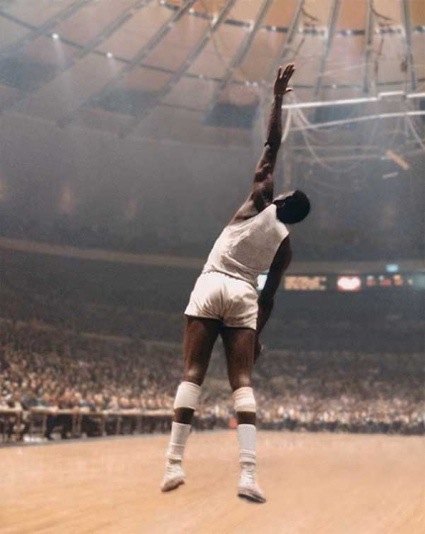 Paul Pfeiffer, Four Horseman of the Apocalypse (6), 2001.
Paul Pfeiffer, Four Horseman of the Apocalypse (6), 2001.
Views inside the book:
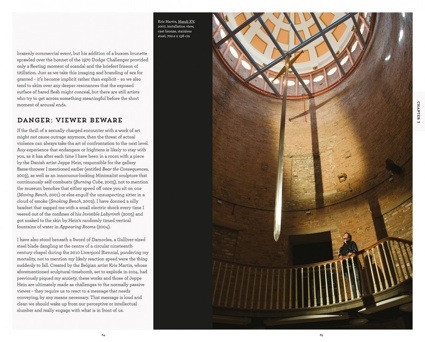

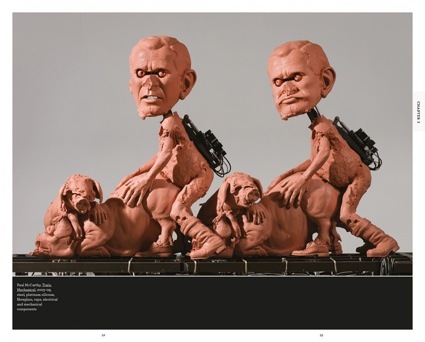
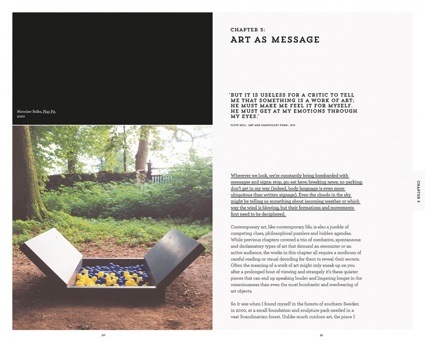
Vice interviewed the author about Ways of Looking.
Image on the homepage: Gregor Schneider, Man With Cock.
